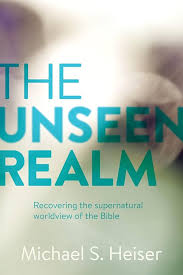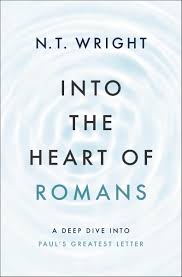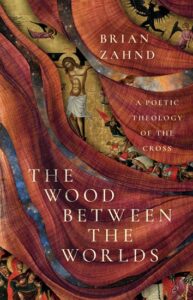We aren’t comfortable talking about spiritual beings. For those of us, even Christians, who grew up in a world dominated by science and a material mindset, talk of angels and demons just feels weird.
Even when we read the Bible, we tend to downplay such topics. In The Unseen Realm, however, Michael Heiser opens our eyes to what is hiding in plain sight.
We know about the angels in the Christmas story and the demons Jesus challenged. Paul also offers a rich vocabulary for such beings which includes “the rulers . . . the authorities . . . the powers of this dark world and . . . the spiritual forces of evil in the heavenly realms” (Eph 6:12).
Heiser, however, focuses on the divine counsel that appears in Job 1–2. You remember—in the midst of this assembly comes The Accuser (aka Satan) who casts doubts on Job’s character and loyalty to God.
While God doesn’t need spirit helpers (as he doesn’t need human ones either), he has chosen to use them, to let them participate in his work—and they are much more involved than we might think.
As Heiser puts it, “Though the kingdom story of the Bible is rarely taught with it in mind, the divine council plays an important role throughout that story’s unfolding. The scriptural pattern is that, when God prepares to act in strategic ways that propel his kingdom forward, the divine council is part of that decision making. The council is the vehicle through which God issues his decrees” (p. 349).
Is he overstating things? There’s more than we might think. Consider the “let us” language of Genesis 1:26 and 11:7. Or the “myriads of holy ones” who came with God when he gave the law on Sinai (Deut 33:1-2; Acts 7:52-53; Gal 3:19). Or those who participated when Isaiah was commissioned (6:1-7). Or another scene much like the one in Job (1 Kings 22:13- 28). Or those who will occupy the multiple thrones of Daniel 7:9 and Revelation 4:1-8.
Yet some rebelled, turned their back on God. The Bible doesn’t exactly tell us why or how. Our ideas on this backstory owe more to Milton’s Paradise Lost than Scripture. But rebel they did.
In Psalm 82:1-7 God judges these beings for supporting the wicked and oppressing the weak. Sometimes they are referred to as gods (Ex 15:11; 1 Kgs 8:23; Ps 97:9), gods who are completely inferior to Yahweh, the true God. We see their ultimate fate in the book of Revelation.
While The Unseen Realm is massively researched, Heiser is a Scripture nerd who writes so nonexperts can follow along. In plain language he answers questions like:
- Are these beings “gods”?
- Why are they called “sons,” and how does Jesus as the only Son fit in?
- How did ancient people think about spiritual beings?
- Who are the Nephilim of Genesis 6:1-4 anyway?
- What in the world is Paul talking about when he says we will judge angels (1 Cor 6:3)?
- Why wasn’t the Old Testament more explicit about a Divine Messiah dying and rising again?
- And where is Armaggedon . . . really?
But The Unseen Realm is more than a collection of questions and answers about oddities in the Bible. Heiser sees the whole sweep of God’s plan for creation tied up in these issues. The main purpose of his book is, in fact, to unveil for us this grand narrative.
That is the topic of my next installment.




 In fact, when the King James Version was originally typeset and published, each verse began its own paragraph. And that is still the way it is printed!
In fact, when the King James Version was originally typeset and published, each verse began its own paragraph. And that is still the way it is printed!

 Because the New Testament writers were people steeped in the Old Testament, that’s where they often drew ideas, motifs, and references to understand this surprising Jesus who was not the military Messiah they expected. The language of “passing by” recalls the story in Exodus 32–33 when Moses asked God to see his glory. God says, “When my glory passes by, I will put you in a cleft in the rock and cover you with my hand until I have passed by” (Exodus 33:22, my emphasis).
Because the New Testament writers were people steeped in the Old Testament, that’s where they often drew ideas, motifs, and references to understand this surprising Jesus who was not the military Messiah they expected. The language of “passing by” recalls the story in Exodus 32–33 when Moses asked God to see his glory. God says, “When my glory passes by, I will put you in a cleft in the rock and cover you with my hand until I have passed by” (Exodus 33:22, my emphasis).
 First, Paul introduces this section on husbands and wives with, “Submit to one another out of reverence for Christ.” Submission for Paul is mutual, not just something a wife offers her husband.
First, Paul introduces this section on husbands and wives with, “Submit to one another out of reverence for Christ.” Submission for Paul is mutual, not just something a wife offers her husband.  Years ago my wife Phyllis felt stunted in her spiritual life by the church we were in. I took that seriously, even though I liked the church. I liked the people. I liked the music. I liked the preaching. It was great for me. After many months of discussion and prayer, however, we were not able to resolve the issue. Then I remembered that Ephesians 5 meant that my wife’s spiritual well-being came before mine. I had to die. So I told her, “It’s up to you. If you want us to go to a different church, we will. I want what’s best for you.”
Years ago my wife Phyllis felt stunted in her spiritual life by the church we were in. I took that seriously, even though I liked the church. I liked the people. I liked the music. I liked the preaching. It was great for me. After many months of discussion and prayer, however, we were not able to resolve the issue. Then I remembered that Ephesians 5 meant that my wife’s spiritual well-being came before mine. I had to die. So I told her, “It’s up to you. If you want us to go to a different church, we will. I want what’s best for you.” Take what Paul says in his letter to the Galatians, for example. It’s a well-known verse often referenced in these discussions. “There is neither Jew nor Gentile, neither slave nor free, nor is there male and female, for you are all one in Christ Jesus” (Gal 3:28). This comes in the middle of a letter that is about making sure Gentiles are treated as full members in the body of Christ, not as second-class Christians. Law shouldn’t divide us, Paul says. Rather grace should unite us.
Take what Paul says in his letter to the Galatians, for example. It’s a well-known verse often referenced in these discussions. “There is neither Jew nor Gentile, neither slave nor free, nor is there male and female, for you are all one in Christ Jesus” (Gal 3:28). This comes in the middle of a letter that is about making sure Gentiles are treated as full members in the body of Christ, not as second-class Christians. Law shouldn’t divide us, Paul says. Rather grace should unite us. Paul’s passionate argument in Galatians calls on all of us to seriously ask questions such as, “How can we all proactively do more? What can we do to make sure that the women in our congregation are growing in Christ, learning more of his grace, growing in their love for God and others? Are there practical changes we can implement that will aid and encourage all groups (but especially those who may be sidelined, because that is Paul’s point) to more fully use their gifts for the building up of the body of Christ? How can we make sure the talents, experiences, and opinions of women are appreciated, that their dignity as people in the image of Christ is affirmed? In this context, how can we look to the interests of others first rather than our own (Phil 2:3-4)?”
Paul’s passionate argument in Galatians calls on all of us to seriously ask questions such as, “How can we all proactively do more? What can we do to make sure that the women in our congregation are growing in Christ, learning more of his grace, growing in their love for God and others? Are there practical changes we can implement that will aid and encourage all groups (but especially those who may be sidelined, because that is Paul’s point) to more fully use their gifts for the building up of the body of Christ? How can we make sure the talents, experiences, and opinions of women are appreciated, that their dignity as people in the image of Christ is affirmed? In this context, how can we look to the interests of others first rather than our own (Phil 2:3-4)?”